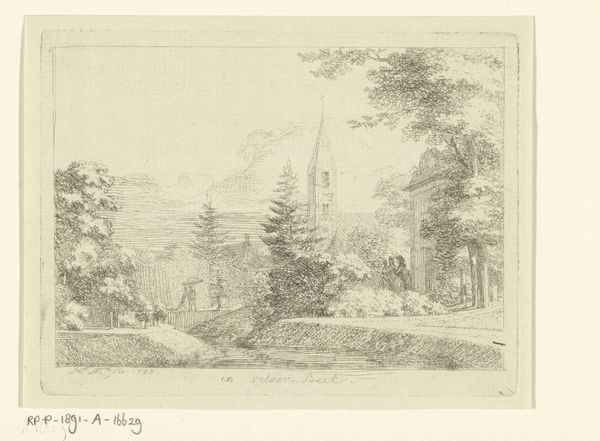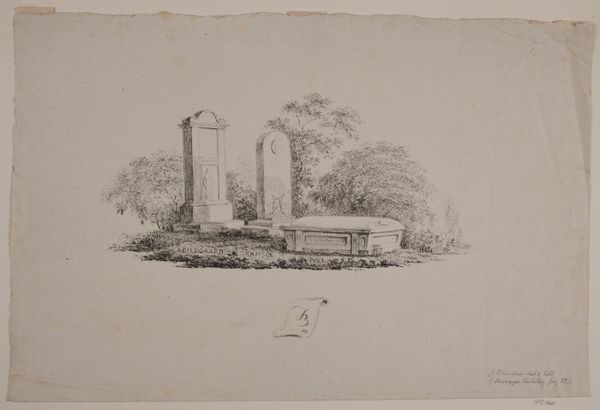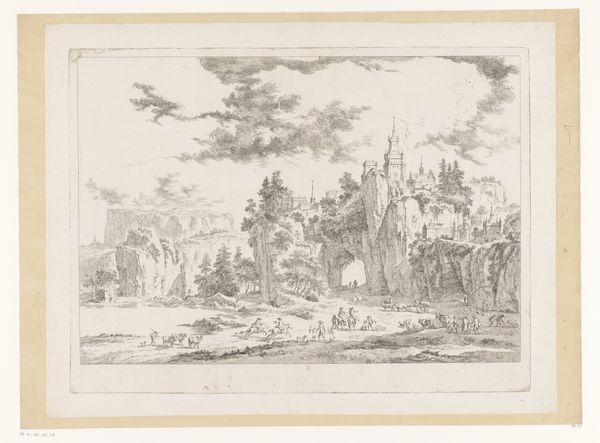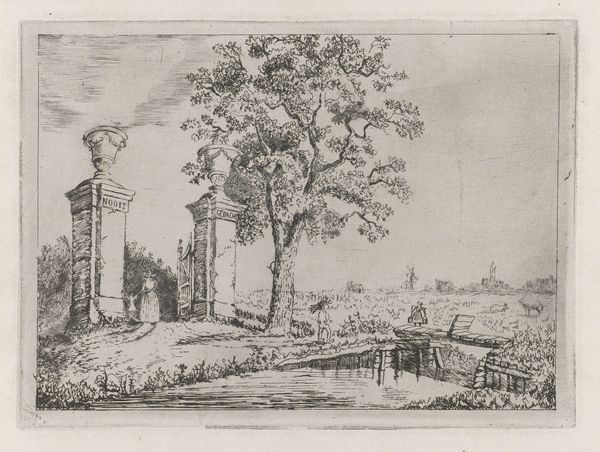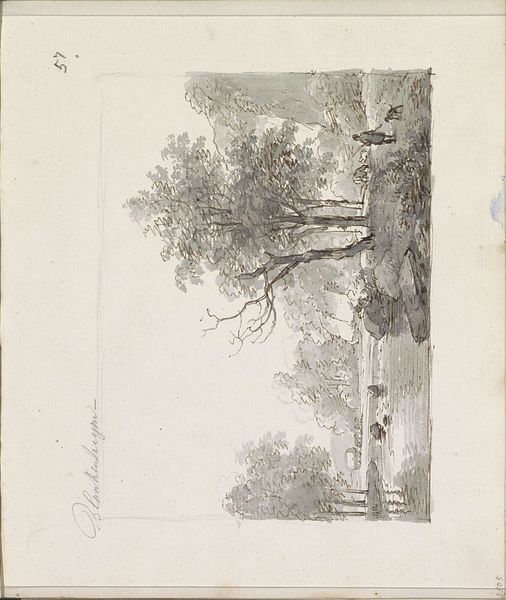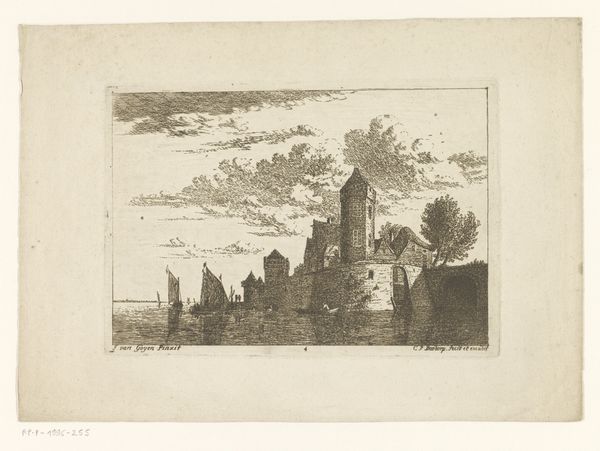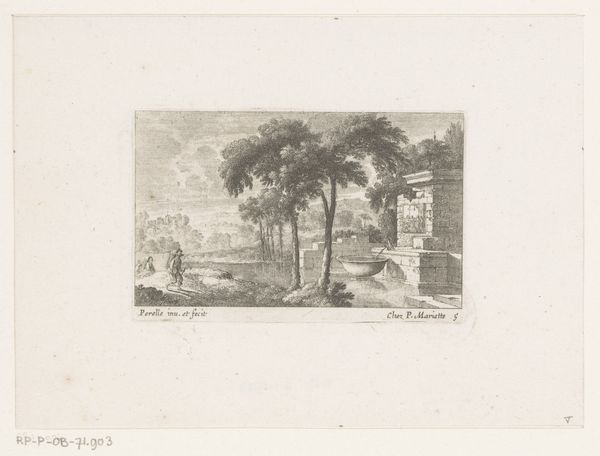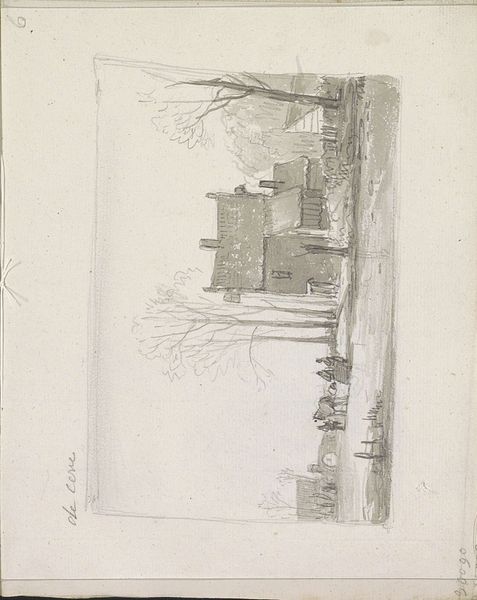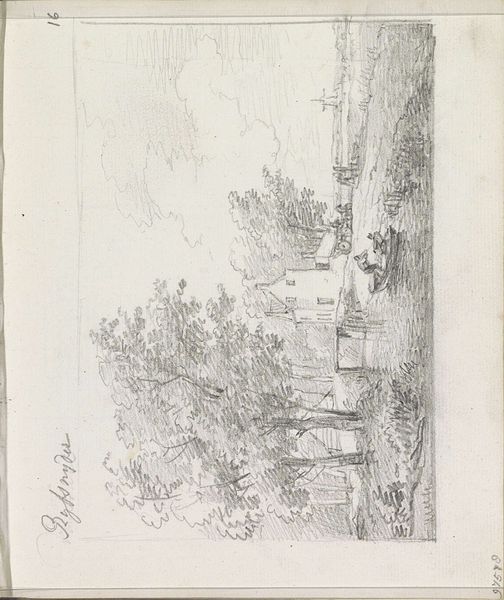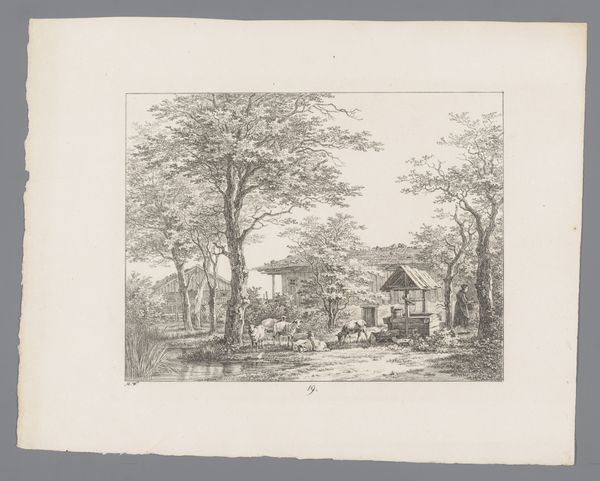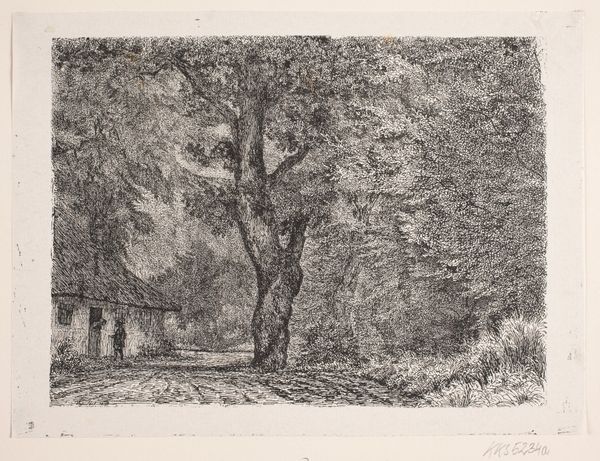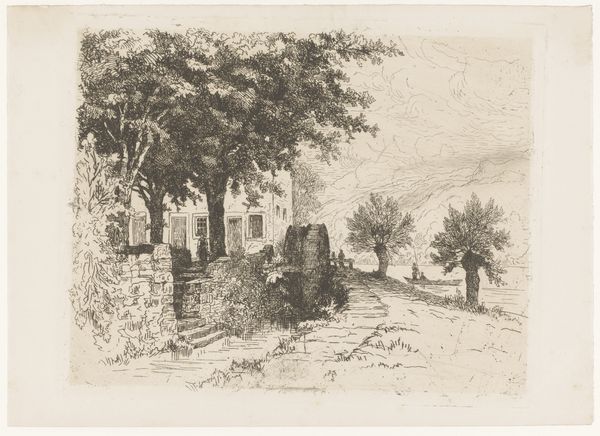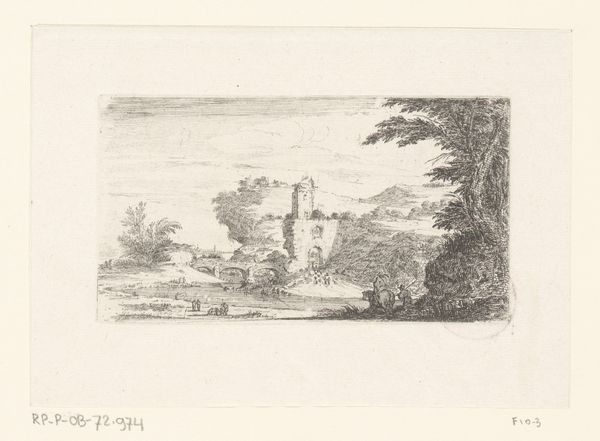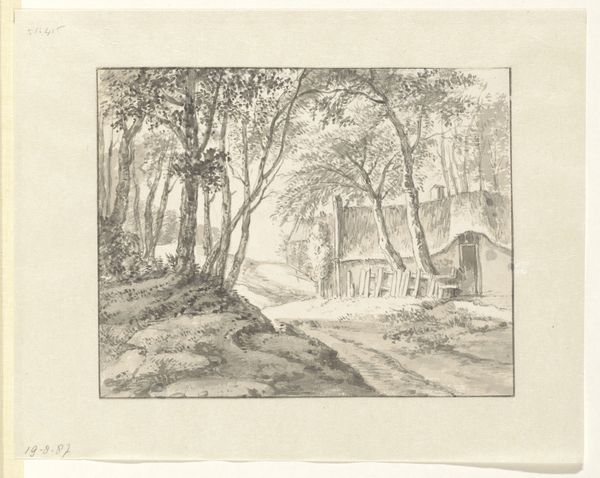
print, etching
# print
#
etching
#
landscape
#
etching
#
realism
Dimensions: height 88 mm, width 122 mm
Copyright: Rijks Museum: Open Domain
Curator: Isaac Weissenbruch's etching, "Begraafplaats met bomen," or "Cemetery with Trees," made sometime between 1836 and 1912 and now housed at the Rijksmuseum. It certainly evokes a pensive mood, doesn't it? Editor: Indeed. There's a subtle starkness in the linearity, a near-austere feel heightened by the restricted tonal range. I wonder about Weissenbruch’s decision-making regarding the pressure of the etching process and what tool choices contributed to this pervasive linearity. Curator: As a print, the production involves labor: the preparation of the metal plate, the application of the ground, the deliberate and controlled scoring to expose the metal, and the submersion into acid for a precisely timed duration. Editor: You're spot on. Consider the cultural context. The work dates roughly to the mid-to-late 19th century, a time of rampant industrialization. The image is suggestive. Its muted palette, repeated grave markers, and towering trees communicate feelings about loss, but I sense there’s also something to be gleaned here in terms of philosophical contemplation—the way, visually, the verticality is countered by horizontality, as if to remind the viewer about mortality itself. Curator: Weissenbruch emphasizes nature but uses an industrial medium, drawing parallels between human industry and the natural world. His etching style mimics drawing and tonal painting through carefully organized hatching patterns. The physical action of etching mirrors acts of inscription in gravestones. Editor: Weissenbruch may subtly highlight how humans have always been concerned with mediating our mortality. And the act of repetitive printing emphasizes that experience isn't a solo occurrence but is shareable among many audiences. I wonder, were there multiple plates used here, and did this edition change much between print runs? Curator: His commitment to capturing what’s naturally observed aligns with Realism, yet there's something deeply personal about its atmosphere, as though we're invited to partake in something extremely personal. It's no doubt tied to Weissenbruch's deep study of form. Editor: Precisely. "Begraafplaats met bomen" is not merely representational. Weissenbruch creates meaning through the materiality and construction of his art, revealing complex interactions between the environment, labor, and grief.
Comments
No comments
Be the first to comment and join the conversation on the ultimate creative platform.

